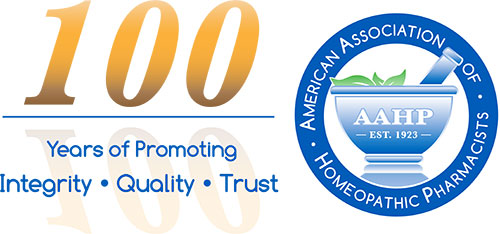Homeopathic Manufacturers Explore Next-Generation Quality Control
MILWAUKIE, Ore., May 4, 2017 — Member companies of the American Association of Homeopathic Pharmacists (AAHP) gathered to learn about promising new technologies recently used by the U.S. Food and Drug Administration (FDA) to analyze homeopathic products. Developments in this area could lead to industry-wide manufacturing advancements as well as improvements to the homeopathic drugs that help consumers every day.
Mark Land, president of AAHP, opened the discussion at the association’s March 9 biannual meeting in Anaheim, Calif. In a broad overview, Land stated that while most instruments currently used to assess homeopathic medicines can resolve to below one microgram—to less than one part per million—new technologies can resolve to parts per billion. Since homeopathic drug products go through a process of serial dilution to achieve certain potencies, these hypersensitive technologies may allow manufacturers to get a deeper look into the makeup of their products than was ever before possible.
These technological advancements mark an industry that is growing and getting better. Yet challenges can emerge as new data becomes available; for example, consistencies at the parts-per-million level may not hold true at the parts-per-billion level. Dr. Neil Spingarn, the meeting’s keynote speaker who specializes in chemical analysis and laboratory testing services for pharmaceutical manufacturers, is seeing this growing pain throughout the pharmaceutical industry. “Routine analysis within our lifetime has evolved from parts per million to parts per billion, and even parts per trillion if you know what you are looking for,” said Spingarn. “The challenge is that we find more things as technology gets better, but that should lead to exciting developments in homeopathic medicines.”
In light of new analytical capabilities, Spingarn gave members in attendance tips to hone their processes and procedures around quality control. He touched upon potential mechanical issues in the dilution process such as the unpredictability of bubbles and foam, accuracy of automated equipment, and potential interactions with materials on the surface of succussion containers. Spingarn also instructed attendees on how to perform a step-by-step validation of the dilution process. Further discussion from the membership focused around validations for extreme dilutions, the ability to detect memory effects, labeling, and logistical issues around scheduling and carrying out validation tests.
Land and Spingarn both emphasized that, in adhering to validation of substances in the parts-per-billion level, the homeopathic industry would be reaching a high bar in quality control. In fact, such high standards are generally reserved for contaminants not often applied to pharmaceutical products. The FDA’s recent use of these hypersensitive technologies on homeopathic products was one of the first for the pharmaceutical industry.
“By setting a new and very high standard for product testing and quality validation, the FDA has given the homeopathic industry an opportunity for growth,” said Land. “In the name of manufacturing excellence, we gladly accept the challenge. We look forward to partnering with the FDA, exploring these new technologies further, and ultimately, providing our customers the best products we possibly can.”
Although current technologies can detect substances at the parts-per-billion level, it is important to remember that implications for safety and therapeutic effect at this level are still unknown. There is still much testing to be done, but in the end the industry and the consumer should benefit.
For more information about AAHP, visit theaahp.org.
###
Contact:
Eric Foxman
513-402-8847
info@theaahp.org
Founded in 1923, the American Association of Homeopathic Pharmacists (AAHP) is the leading industry association for the manufacturers, distributors and marketers of homeopathic drugs. AAHP promotes excellence in the practice of homeopathic pharmacy, manufacturing, marketing and distribution by supporting the requirements, criteria and published guidelines in the HPUS, relevant Federal statutes, as well as other industry regulations/compendia—all to help members provide safe, effective homeopathic medicines to consumers, retailers and healthcare practitioners.
